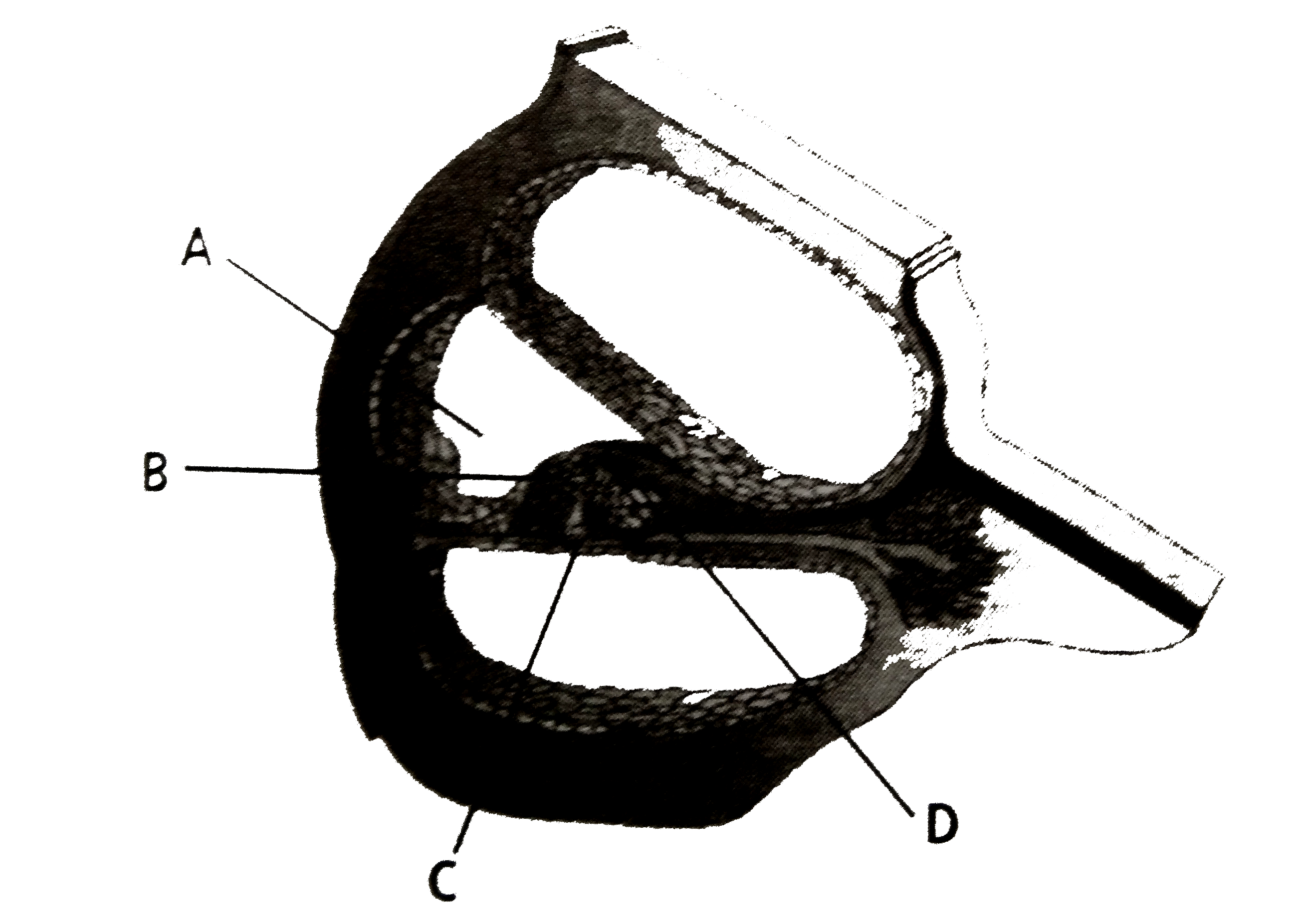Otolith organ helps in
hearing
vision
equilibrium
tactile stimulation
The correct Answer is:C
Step-by-Step Solution:
1. Understanding the Otolith Organ: The otolith organ is part of the inner ear and is crucial for maintaining balance and spatial orientation. It is also referred to as the otolithic organ and contains structures that help detect changes in head position and motion.
2. Composition of the Otolith Organ: The otolith organ contains small crystals made of calcium carbonate. These crystals are known as otoconia. They are embedded in a gel-like substance within the utricle and saccule, which are parts of the vestibular system.
3. Function of the Otolith Organ: The primary function of the otolith organ is to help the body maintain equilibrium. It detects linear accelerations and the effects of gravity, allowing the brain to understand the position of the head in relation to the ground.
4. Evaluating the Options:
- Option A: Hearing - Incorrect. The otolith organ is not involved in the auditory process.
- Option B: Vision - Incorrect. The otolith organ does not play a role in visual perception.
- Option C: Equilibrium - Correct. The otolith organ is essential for maintaining balance and spatial orientation.
- Option D: Tactile Stimulation - Incorrect. The otolith organ does not function in tactile sensation.
5. Conclusion: Based on the functions and characteristics of the otolith organ, the correct answer is Option C: Equilibrium.
---
- Option A: Hearing - Incorrect. The otolith organ is not involved in the auditory process.
- Option B: Vision - Incorrect. The otolith organ does not play a role in visual perception.
- Option C: Equilibrium - Correct. The otolith organ is essential for maintaining balance and spatial orientation.
- Option D: Tactile Stimulation - Incorrect. The otolith organ does not function in tactile sensation.
Topper's Solved these Questions
- NEURAL CONTROL AND COORDINATIONBOOK - AAKASH SERIESCHAPTER - NEURAL CONTROL AND COORDINATIONEXERCISE - EXERCISE-II
47 Videos
- NEURAL CONTROL AND COORDINATIONBOOK - AAKASH SERIESCHAPTER - NEURAL CONTROL AND COORDINATIONEXERCISE - EXERCISE-III( PREVIOUS AIPMT / NEET QUESTIONS)
33 Videos
- NEURAL CONTROL AND COORDINATIONBOOK - AAKASH SERIESCHAPTER - NEURAL CONTROL AND COORDINATIONEXERCISE - EXERCISE-I (PERIPHERAL NERVOUS SYSTEM)
12 Videos
- MOLECULAR BASIS OF INHERITANCEBOOK - AAKASH SERIESCHAPTER - MOLECULAR BASIS OF INHERITANCEEXERCISE - Exercise-III (Previous AIPMT/NEET Questions) (AFMC)
5 Videos
- ORGANISMS AND POPULATIONSBOOK - AAKASH SERIESCHAPTER - ORGANISMS AND POPULATIONSEXERCISE - EXERCISE-III (PREVIOUS AIPMT/NEET QUESTIONS)
35 Videos
Similar Questions
Knowledge Check
Identify the parts labelled as A,B,C and D in the given figure and match the correct names from the list (i-viii) given below.

(i)Reissner's membrane , (ii)Basilar membrane
(iii)Tectorial membrane , (iv)Organ of Corti
(v)Hair cellls , (vi)Otolith organ
(vii)Scala media , (viii)Scala vestibuliAABCD(ii)(v)(iii)(i)BABCD(vii)(iv)(ii)(iii)CABCD(vii)(iv)(i)(ii)DABCD(viii)(vi)(i)(iii)
The process of mineralisation by micro organisms helps in the release of
View SolutionName two homologous structures in vertebrates. How do such organs help in understanding evolutionary relationship ?
View SolutionAmnion helps in
View SolutionStatolith is an organ which helps in
View SolutionThe process of mineralisation by micro-organisms helps in the release of
View SolutionWhich of the following organ never helps, in Oxygenation of blood in any vertebrate , at any stage of their life ?
View SolutionVestibular apparatus of the internal ear includes - (a) crista ampullaris and macula , (b) Semicircular canals , (c) otolith organ , (d) Saccule and utricle
View Solution
